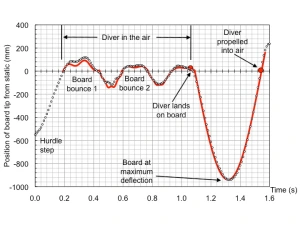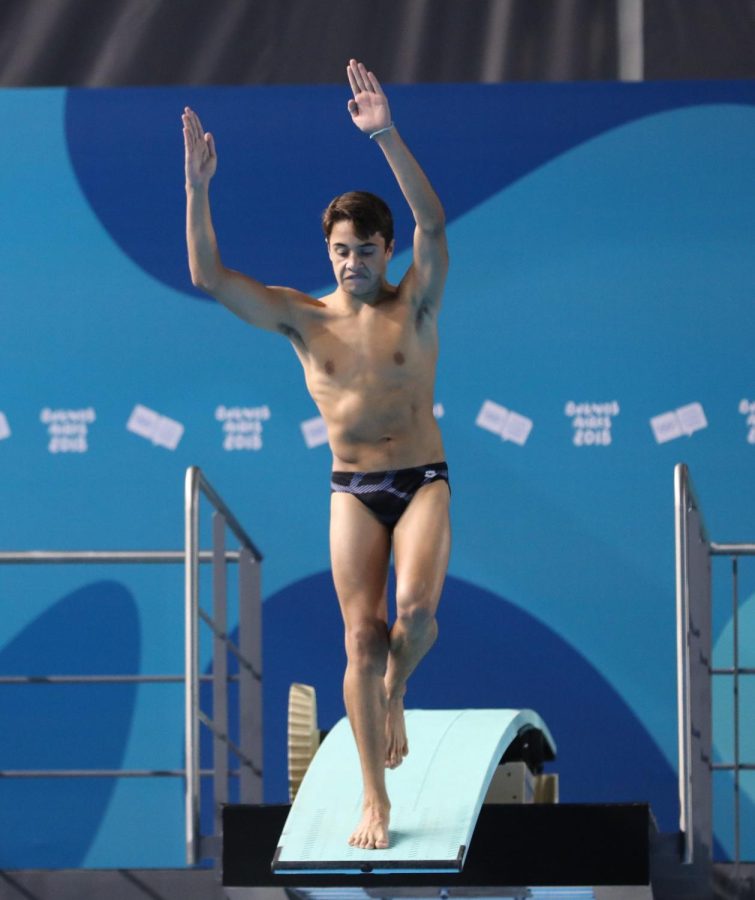The Physics Behind Diving
The science behind this olympic sport
Diving is an Olympic sport where the athlete does somersaults and/or twists in multiple directions off of either a springboard or platform. To understand the physics of diving, you must understand the conservation of energy and energy conversion as well as the resonance and vibration of a cantilever beam.
The first step to understanding the physics of diving is energy conversion. A dive is a great exhibit of the conversion of energy from one form to another. For example, when the diver goes into their first step and leaps up into the air, they are giving their dive potential energy(the height of their jump). It is at the apex of their jump when the diver has the maximum potential energy which then begins to convert to kinetic energy as the diver lands back on the board. According to Brian at Engineering a Future, “your weight (…technically, your mass…) and acceleration towards the board produce a load that is applied to the board of stiffness, causing deflection of the board downwards.” Next, the diver loads the board with elastic energy. According to the University of Cambridge, “the diver pushes down on the board to store some elastic energy, bends their legs, and brings their arms down so that they reach their lowest point at the same time that the board reaches its lowest point. As the board rebounds, the diver straightens his legs and throws his arms upwards, pushing against the board. The board pushes up on the diver due to Newton’s third law of motion, and sends him into the air.” The diver’s muscles when they push off the board convert chemical energy to kinetic energy. Now, the diver has enough energy and height required to complete the necessary somersaults and/or twists of the dive. While the somersaults and twists are the most beautiful and exciting parts of diving, most of what the diver needs for a successful dive happens before they leave the board.

All the actions that a diver does would not be possible without the physics of a diving board. The diver needs to understand the board the same way a musician needs to understand their instrument. The diving board has a pivot called a fulcrum that the diver can move to change the bounciness of the board. When the diver moves the fulcrum towards the tip of the board, it makes the free end of the board shorter. When the diver moves the board away from the tip, it makes the free end of the board longer and thus bouncier. Look at the graph on the left at the lowest point on the line which is the maximum deflection of the board. According to Steve Haake at Engineering Sport, “Getting the board to do this seems to be a combination of setting the pivot in the right place, and jumping the right height during the hurdle step to get the landing time right.”
In conclusion, while you don’t need to be a physics major to do a good dive, understanding the physics behind diving allows the diver to know where to focus their energy. A good dive consists of many factors including, fulcrum placement, the timing of the board, and energy conversion which all occur before the diver even leaves the board.
Related Stories
https://news.ncsu.edu/2012/07/olympic-physics-diving/
https://www.cambridgediving.org.uk/wp-content/uploads/2021/06/Science-behind-diving.pdf
Take Action
- Sign up for a dive team near you https://secure.meetcontrol.com/divemeets/system/teamlist.php
- Where to watch diving https://www.espn.com/watch/catalog/904ff2f3-3ce3-3b9e-bca9-3608ec5f616b/swimming-and-diving
- FINA https://www.fina.org/diving















